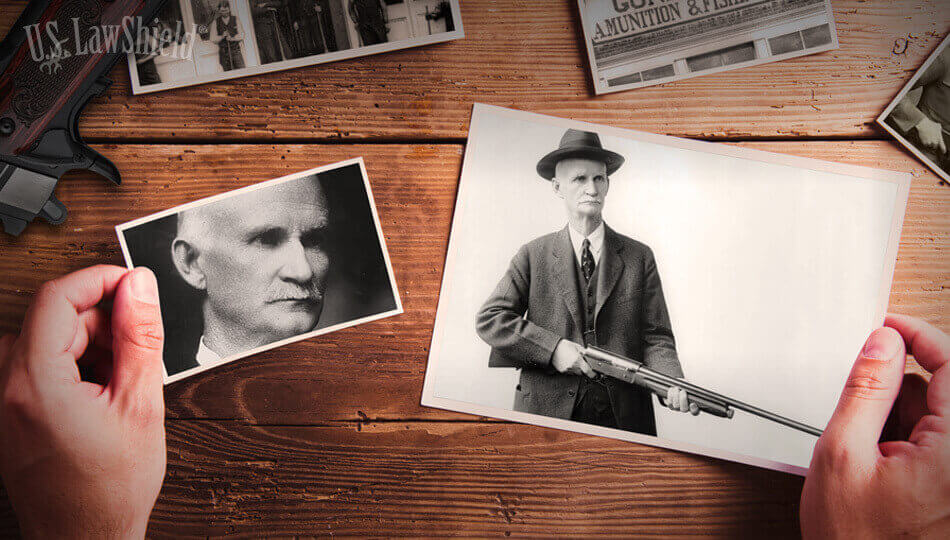
The hand of John Moses Browning is evident across firearms — everything from semi-automatic pistols, to shotguns, Winchester lever-action rifles, even military weapons such as the “Ma Deuce” .50 caliber machine gun that Browning designed — from the late 19th century into today. Browning’s designs took firearms from the single-shot rolling block rifle to the machine gun, and influenced almost all types of firearm design, particularly autoloading ammunition. His inventions included significant improvements to single-shot, lever-action, and pump-action rifles and shotguns, and he developed some of the first reliable autoloading pistols by inventing a telescoping bolt and integrating this bolt and barrel shroud into a slide.
For example, consider Browning’s “Hi-Power” semi-automatic pistol, the design he was completing when he passed away from heart failure at his workbench in November of 1926. Browning began work on the pistol in the early 1920s and produced prototypes in 1923. Following his death, Browning’s design was completed by Dieudonné Saive at Fabrique Nationale (FN) in Belgium.
The Hi-Power is a single-action, semi-automatic pistol developed to fire the 9 x 19 mm Parabellum cartridge created by Georg Luger in 1901. It has a 13-round magazine, twice what Luger’s design did; twice what Browning’s own iconic .45 ACP Model 1911 had. The Hi-Power was one of the highest capacity semi-autos available for some time.
While his design was certainly not the first autoloading pistol — that honor goes to Austrian Salvator Dormus’s patent on an 8mm blowback pistol from 1891, followed by Hugo Borchardt’s 7.63 mm 1893 design, Bergmann’s 7.5 mm 1893 model, and Mauser’s 1896 “Broomhandle” pistol in 7.63 mm Mauser — one can’t deny the similarities between the Hi-Power, Browning’s Model 1911 and today’s 16-round 9 mm Glocks, first produced a century after Browning’s early firearm and cartridge designs. So, let’s take a closer look at the man and his work honoring how Browning has influenced modern firearms.
The Man
John Moses Browning was born in 1855, one of the 22 children his father, gunsmith Jonathan Browning, a Mormon pioneer who followed Brigham Young into Utah to establish their Latter-day Saint community, created with his three wives. The elder Browning began producing firearms in 1831, having invented a “sliding breech” repeating rifle.
John Moses took an early interest in firearms. He worked at his father’s side in his store and gun repair shop in Ogden, Utah, from age 7, where he learned the basics of gun engineering and manufacturing. Young John was also encouraged to experiment. His first design — at age 13, in 1868 — was a single-shot falling block-action rifle. He believed it superior to the popular Sharps rifle because the hammer was centered on the action and dropped down, out of the way, to bring up a new cartridge.
By 1878, at age 23, Browning and his brother Matthew founded Browning Arms to produce John’s rifle and other firearms. A year later, 24-year-old Browning was awarded the first of the 128 firearm patents he’d eventually receive.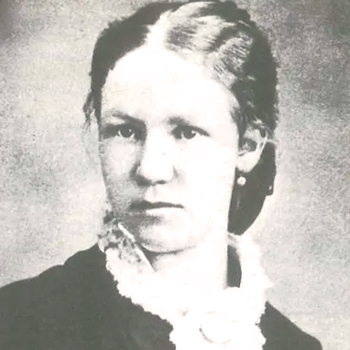
Also in 1879, John married Rachel Child. Her father, Warren Child, a merchant, wasn’t entirely thrilled with the union, but he knew John was a practicing Mormon, who didn’t drink or smoke, so he bestowed his blessings on the couple and gave them a cookstove, bedroom set, cottage organ, and a cow. John and Rachel would live in Ogden, in several plain homes, all their lives. They had 10 children together, six boys and four girls, two of whom died in infancy. Their eighth child, Val, would play an important role in his father’s livelihood in the years to come. John relished his role as a family man yet was away for long periods of time pursuing his gun and cartridge design business. Rachel focused her attention on raising the children. Well known in the Ogden community, they were also a well-liked family.
By 1883, Browning Arms employed three other brothers, Thomas, William, and George Browning, to produce John’s rifle. A year earlier, John Browning filed for a patent on a bolt-action repeating rifle with a tubular magazine.
Winchester Repeating Arms and Browning
Following a production run of about 600 Browning-made single-shot rifles, T.G. Bennett, vice-president and general manager of Winchester Repeating Arms approached John Browning in Ogden to form an alliance with the young designer.
Winchester bought Browning’s single-shot design for $8,000 and received assurances of first rights to a new repeater Browning had in mind. Winchester moved production of Browning’s falling-block single shot to their Connecticut factory, and it became the Winchester Model 1885 Single Shot.
Next, Winchester asked Browning to design a lever-action shotgun, in keeping with their famous lever-action 1873 rifles. Browning did this. The Model 1887 was one of the first successful repeating shotguns. However, while designing the 1887 shotgun, Browning suggested a pump-action would be much more appropriate for a repeater. Winchester, focused on lever guns, initially balked at this.
Meanwhile, Browning worked on improving Winchester’s earlier lever rifles. His hand created the Model 1886 lever rifle, designed to handle more powerful cartridges than the .44-40 or .45s popular at the time. The 1886 rifle was initially chambered in .45-70, .45-90 WCF, and .40-82 WCF, later the .50-110 Winchester round. And, despite being designed to handle black powder-based cartridges, the action was strong enough to transition to smokeless powder with minor modifications.
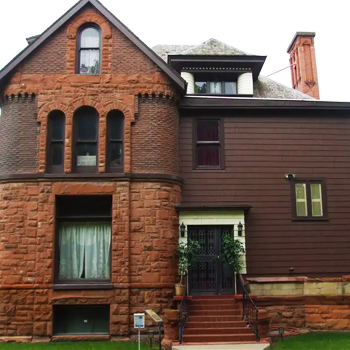 Browning continued improving Winchester’s lever guns, with his Model 1892, Model 1894, and Model 1895(Theodore Roosevelt’s favorite) designs. The Model 1894 became one of the most famous and popular hunting rifles of all time, the rifle most associated with Winchester lever guns.
Browning continued improving Winchester’s lever guns, with his Model 1892, Model 1894, and Model 1895(Theodore Roosevelt’s favorite) designs. The Model 1894 became one of the most famous and popular hunting rifles of all time, the rifle most associated with Winchester lever guns.
Browning designed the rifle in 1894. It was originally chambered to fire black powder-burning .32-40 Winchester and .38-55 Winchester cartridges. However, in 1895, Winchester introduced the smokeless powder-propelled .30 Winchester Center Fire, which became known as the .30-30. A .32 Winchester Special round was included for the 1894 in 1902. After the Model 1892 was retired, 1894s were manufactured in many revolver calibers: .38 Colt, .44 Special, .45 Colt, and .44-40 Winchester. Tubular magazines under the rifle’s barrel typically held up to 13 rounds in handgun calibers, less in rifle calibers.
Deer hunters across the country, especially in the well-timbered East, still use .30-30s in Model 1894s. The Model 1894 was produced by Winchester through 1980, then by U.S. Repeating Arms under the Winchester brand through 2006, and it’s still produced by Miroku today. Firearm historians call the 1894 the ultimate lever gun. Some 7 million- have been made.
Browning continued to work in partnership with Winchester and his idea for a pump-action shotgun took root in 1893, as a predecessor of the Model 1897 shotgun. The 1893 model, designed for black powder loads, morphed into the 1897 improved version, for smokeless shotshells.
The 1897 looks much like modern pump guns, except for an exposed hammer. It can be taken down, the barrel separated from the action and stock, to be cleaned like a modern Remington 870 or Mossberg 500 pump, which used the basics of Browning’s designs. The 1897 was produced for 60 years, though 1957, tallying more than 1 million sold. The military bought the 1897 for use in World War I as an effective trench weapon. Germany complained about this, but in light of German flamethrowers and serrated bayonets, that gripe seemed a little shallow.
Winchester’s most famous pump gun, the hammerless Model 12, was a spin-off of Browning’s 1897 design. Winchester engineer T.C. Johnson based his design on Browning’s ideas to create what Winchester called “the Perfect Repeater” at its introduction in 1912. Nearly 2 million were produced through 1964 in various gauges and grades. The Model 12 is still coveted and used by many shotgunners.
In 1889, Browning began experimenting with using the force created by the combustion of gun powder—the gasses that propel a bullet down a barrel—to power the action of a gun, automatically reloading the next round into the chamber. He received a patent on this process in 1892. This Browning idea and another would come to revolutionize how firearms would operate to this day.
Enjoying this content? Find out how you can get more sent straight to your inbox.
Browning Machine Gun
Among the first successful Browning applications of this idea was the Colt–Browning M1895 “potato digger” machine gun, the first successful gas-operated machine gun. It was based on a design by John and brother Matthew Browning. They filed a patent for automatic rifles in 1892, and from this idea sprang the M1895.
Machine guns were not new. The 1861 Gatling Gun, a hand-cranked multi-barrel device that could fire as much as 200 – 400 rounds per minute was the grandfather of machine guns. Hiram Maxim’s 1884 design is credited as the first machine gun, the first automatic weapon in the world. But it was recoil, not gas operated. The thump of a shot ejected the spent shell, loaded a fresh round. A water-shrouded barrel was required to cool the heat from the continued firing in a single barrel. It had a 600-round per minute firing rate.
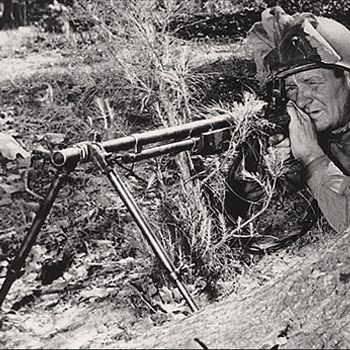 The M1895 Machine Gun saw action in the Spanish–American War with the U.S. Marine Corps. It had approximately a 400-round per minute rate of fire.
The M1895 Machine Gun saw action in the Spanish–American War with the U.S. Marine Corps. It had approximately a 400-round per minute rate of fire.
Browning, like Maxim, also toyed with recoil operated firearms. Browning finished a new, long recoil operated, semi-automatic shotgun design in 1898 and wanted Winchester to make it. Previously, the deal Browning had with Winchester was a single, upfront payment for his designs. If this new shotgun became successful, Browning and brother Matthew wanted royalties from the sale of the gun — not a one-shot payment.
Winchester balked. Remington was approached, but the company’s president, Marcellus Hartle, died from a heart attack before an approval. In 1897, Browning had negotiated a contract with Fabrique Nationale (FN) to manufacture his gas operated, .32 caliber semi-automatic pistol design for markets outside the U.S., so he offered the shotgun to FN. They accepted, and in 1903 began producing the hump-backed Browning Auto-5. FN production ended in 1998, but Browning picked the A-5 up again, tweaked the design for the 21st century, and in 2008 began a new version of the A-5. Both versions remain very popular shotguns.
A second recoil-operated autoloading firearm, a rifle, also sprang from Browning’s design. In October of 1900, Browning was granted a patent for this, which he sold to Remington and became known as the Model 8, in .25 Remington, .30 Remington, .32 Remington, and .35 Remington. FN produced the same rifle outside the U.S. Some 80,000 Model 8 rifles were sold in the U.S., the rifle was less popular in Europe.
As a result, the fruitful 19-year Winchester — Browning relationship soured. In 1902, Browning cut ties with Winchester. But Browning’s relationship with FN, Colt, Remington, and other firearm manufacturers would grow during the 20th century. His son Val, for example, served as a liaison to FN in particular, making many steamship trips across the Atlantic to Belgium.
The 20thCentury
John Browning’s firearm and ammunition designs owned the 20th century.
In 1900, Colt manufactured a Browning-designed .38 caliber short recoil-operated semi-automatic pistol, the first semi-automatic pistol in the U.S. A year later, his gas-operated .32 caliber semi-automatic Colt pistol came to be. In 1903, at the request of FN, Browning developed a 9 x 19 mm military semi-automatic pistol.
In 1904, Colt was working with John Browning on a .41 caliber cartridge and a recoil-operated autoloader pistol to go with it, but when the U.S. Army insisted on using .45 caliber rounds, Browning pivoted the design to produce Colt’s Model 1905 automatic pistol and the new .45 Automatic Colt Pistol (ACP) cartridge. In 1909, he patented a similar .25 caliber semi-automatic pistol sold by both Colt and FN. A year later, 1910, patents were filed on a .45 caliber semi-automatic pistol, what would become the Model 1911. It served as America’s official military sidearm for almost 75 years — through World Wars I and II, Korea, and Vietnam, until 1985. It’s still used, in a modified form but still in .45 ACP, by the Marines and some law enforcement agencies.
Browning Automatic Rifle
Browning’s work on other military firearms also continued. In 1917, the year before the U.S. became involved in World War I, Browning (via Colt) showed the Army two types of automatic weapons: his water-cooled and belt-fed machine gun, unveiled at Congress Heights in Washington, D.C. in February; and a shoulder-fired automatic rifle he called the Browning Machine Rifle. Both used the Army’s standard .30-06 round. The live-fire demonstration so impressed the gathered crowd that Browning was immediately awarded a contract.
The machine gun became the Army’s M1917 .30 caliber, firing 450-600 rounds per minute weapon, and like the Model 1911 pistol, would see service through two world wars, Korea, and Vietnam.
Browning’s automatic rifle also found favor, becoming the famous BAR, the M1918 .30 caliber automatic rifle. It was designed for “walking fire” — suppressive fire to keep an enemy from firing back — carried by infantry squads during an assault, although a 20-round magazine hampered this somewhat.
The Army ordered 12,000 Browning Automatic Rifles from Colt, but Colt was already cranking out firearms for the conflict in Europe and couldn’t complete the order, so Winchester got a 25,000 BAR deal and refined the BAR’s design slightly for mass production. In July of 1918, the BAR arrived in France with the 79th Infantry. It was personally demonstrated against the enemy by 2nd Lt. Val Browning, John’s son. The BAR impressed the Allies during the Meuse-Argonne offensive, and France alone requested 15,000 BARs to replace their jam-prone Chauchat machine rifles.
The BAR would continue to be used through World War II and Korea. It also became a favorite weapon for criminals during the 1930s. Clyde Barrow and Bonnie Parker preferred BARs with armor-piercing .30-06 ammo and stole both from National Guard armories. The price for a black-market BAR was $5,000 in 1936. As gangsters upped their automatic fire, the FBI, the U.S. Treasury Department, and other law enforcement agencies responded by buying BARs, too.
Ma Deuce: Browning’s .50 Caliber Machine Gun
In addition to the BAR and .30 caliber machine guns, in 1917, Browning was also working on a .50 caliber version of his .30 caliber machine gun. The larger rounds were needed to defeat armor, appearing on tanks and aircraft. Army Ordnance consulted Browning about creating a projectile that could pierce this armor, and he’s reputed to have told them, you create the round, I’ll build the gun. The Army then contracted with Winchester to produce this round, modeled after a souped up .30-06 cartridge, initially with a rim, so Winchester could use it in their non-Browning anti-tank rifle. However, General John “Black Jack” Pershing intervened. He wanted a rimless cartridge. Frankford Arsenal took over production, and the Army returned to Browning for the machine gun.
Colt and Browning created a water-cooled prototype, testing it on World War I Armistice Day, November 11, 1918. It didn’t pan out. The gun was heavy, fired less than 500 rounds per minute, difficult to control, and not powerful enough to pierce armor with a muzzle velocity of 2,300 fps. Cartridge improvements and design changes were promised. In 1921, Browning introduced his M1921 water-cooled machine gun. Both Winchester and Browning made improvements which brought the gun’s velocity up to 2,750 fps, with a 600-rounds per minute rate of fire.
Browning’s death in 1926 allowed S. H. Green to study the M1921’s design problems and make some changes. His adaptations — it was still mostly Browning’s gun — allowed a single- receiver design to turn the gun into seven types of .50 caliber machine guns by using different jackets, barrels, and other components. Colt began manufacturing this version, the M2, the enduring “Ma Deuce” Browning Machine Gun in 1933. It’s been used by the U.S. military ever since, longer than any other firearm except Browning’s Model 1911 .45 ACP pistol and is the primary heavy machine gun of NATO and other countries as well. It also spawned a spin-off, the M4 37 mm autocannon, also created by Browning in 1921 and used in planes and U.S. Navy PT boats in World War II.
Legacy
No other gun designer has been credited with as many revolutionary firearms and ammo designs as John Moses Browning. His work spans decades when enormous changes came to firearms and ammo development. Yet, unlike many other gun designers, Browning was a firearms designer by trade, not a tinkerer. Richard Gatling, for example, tinkered to invent a screw propellor for ships, a wheat drill, hemp break machine, and two plows, as well as his Gatling Gun. Hiram Maxim, the machine gun inventor, also developed hair-curling irons, a mousetrap, steam pumps, and claimed a certain lightbulb as his own. Browning created not only military and civilian firearms, but also developed cartridges and gun mechanisms. Regardless of the superiority of today’s ammo and firearms, but there’s no AR or Glock without John Moses Browning’s work. Plus, the Browning name lives on in modern Browning offerings like the X-Bolt bolt-action rifle and other firearms. A list of ammo and firearms he designed — those not previously mentioned — includes the following:
- Cartridges – .32 ACP, .380 ACP, 9mm Browning Long
- Pistols – FN M1899/M1900 (.32 ACP), Colt Model 1902 (.38 ACP), Colt Model 1903 Pocket Hammer (.38 ACP), Colt Model 1903 Pocket Hammerless (.32 ACP), FN Model 1906 Vest Pocket (.25 ACP), Colt Model 1908 Vest Pocket (.25 ACP), Colt Model 1908 Pocket Hammerless (.380 ACP), FN Model 1910 (.32 ACP, .380 ACP), FN Model 1922 (.32 ACP) and (.380 ACP), Colt Woodsman pistol (.22 LR).
- Shotguns – Savage Model 720 long-recoil semi-automatic, Ithaca Model 37 pump, Stevens Model 520/620 pump, Browning Superposed over/under, Remington Model 17 pump.
- Rifles – Winchester Model 1890, slide-action repeating rifle (.22 LR), Winchester Model 1900 bolt-action single-shot rifle (.22 LR), Browning 22 semi-automatic rifle (.22 LR), Remington Model 24 semi-automatic rifle (.22 LR), FN Trombone pump-action rifle (.22 LR).
Your Protection Starts Here!
The information provided in this publication is intended to provide general information to individuals and is not legal advice. The information included in this publication may not be quoted or referred to in any other publication without the prior written consent of U.S. LawShield, to be given or withheld at our discretion. The information is not a substitute for, and does not replace the advice or representation of a licensed attorney. We strive to ensure the information included in this publication is accurate and current, however, no claim is made to the accuracy of the information and we are not responsible for any consequences that may result from the use of information in this publication. The use of this publication does not create an attorney-client relationship between U.S. LawShield, any independent program attorney, and any individual.

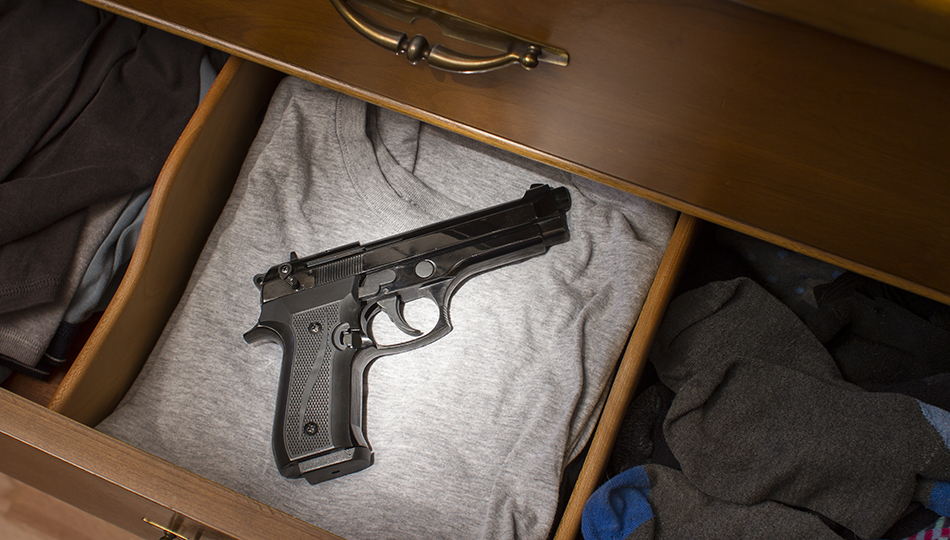
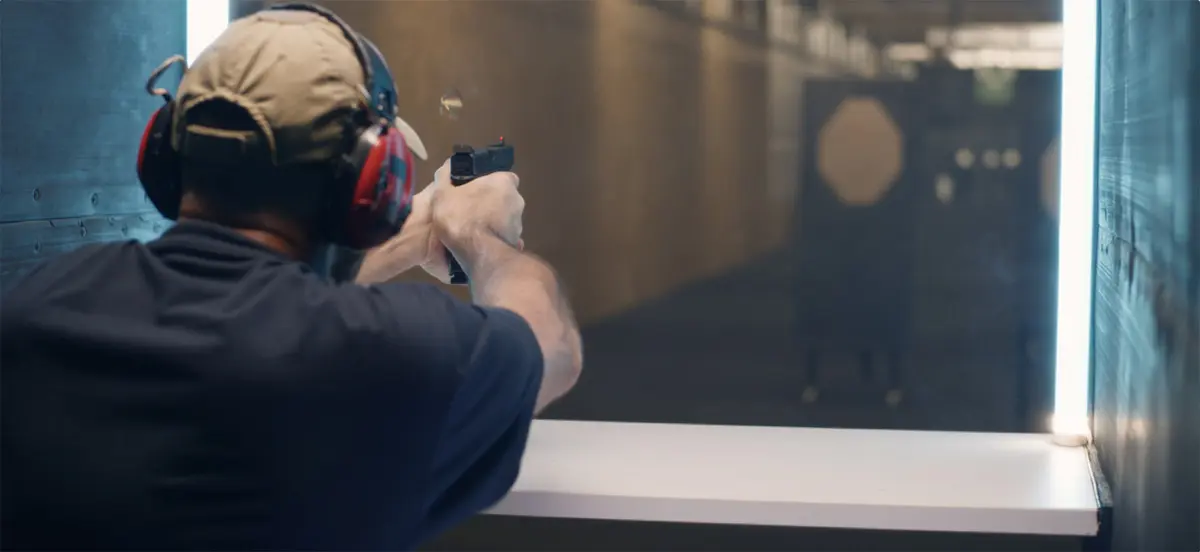
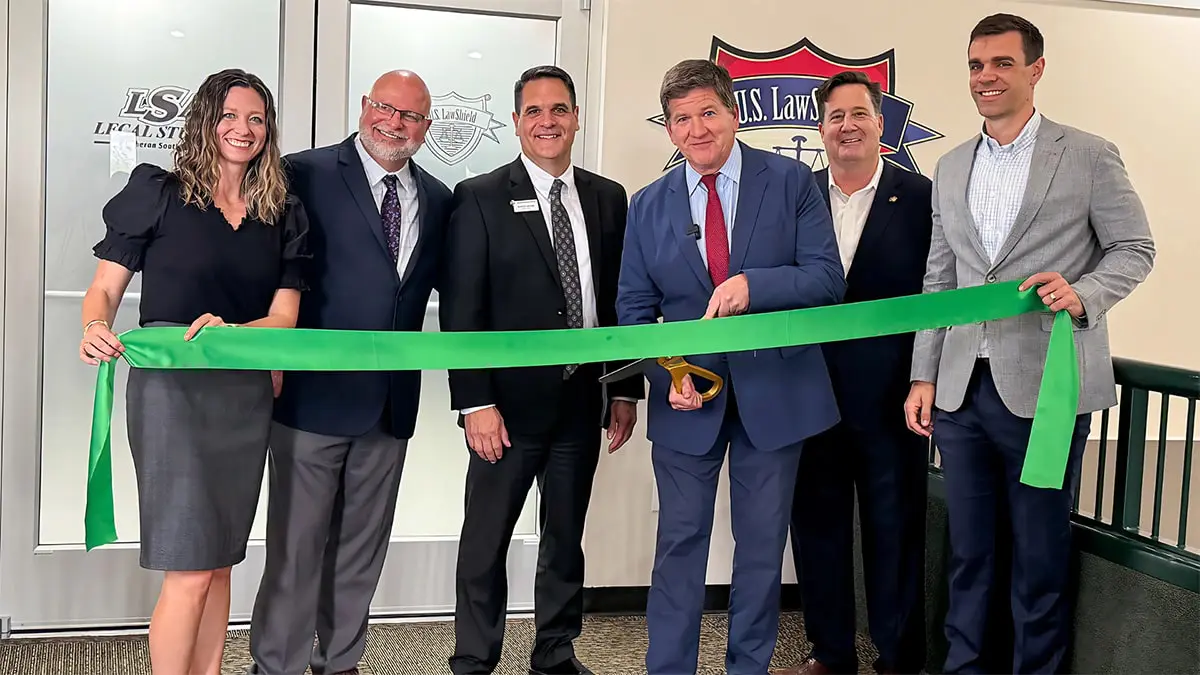

Leave A Comment